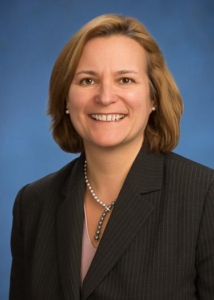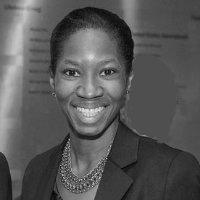After a successful managerial climb at State Street, a large global financial services company in Boston, Michelle Figueiredo made the most difficult decision of her professional career. She had her first conversation with the company’s human resources department about her true identity.
“I spoke for three hours with the woman in HR,” Figueiredo, who was professionally known as Michael before she transitioned, recalled. “She said to me, ‘we have never had this happen before, we’ll work with you. We support you 100 percent.”
A similar conversation occurred a year later at the Boston office of the large multi-national law firm Edwards Wildman where Sara Schnorr had been a lawyer for 30 plus years (Edwards Wildman is the successor to Edwards Angell Palmer & Dodge). Schnorr, who was named partner at the Boston office in 1987, had made the decision in 2009, at the age of 61, to professionally acknowledge her true identity. The law firm’s senior management, having known Sara as Tom – her given birth name – as an invaluable partner, told her, “of course we’ll support you.”
These two stories of male-to-female transition (MTF) are becoming more frequent in working environments throughout the state of Massachusetts, where the state legislature and local businesses are widening their anti-discrimination clauses. A 2011 law called An Act Relative to Gender Identity prohibits discrimination in several key areas and defines gender identity as “a person’s gender-related identity, appearance or behavior, whether or not that gender-related identity, appearance or behavior is different from that traditionally associated with the person’s physiology or assigned sex at birth.”
Even before the Massachusetts legislature enacted the law and the Governor signed it effective as of July 2012, employers across the state, both locally and those with global partners, were breaking barriers through the implementation of diversity policies, including the freedom for employees to self-identify. It’s a trend that, while not federally mandated, has been included in anti-discrimination polices for many private businesses across the country.
According to the Human Rights Campaign Foundation’s 2013 Corporate Equality Index (CEI) this year has seen 54 new businesses adjust their corporate policies as they relate to LGBT employees, 42 percent of the CEI-rated employers have distinct global codes of conduct or employment standards that are inclusive of both sexual orientation and gender identity, and of those same rated employers 83 percent have a LGBT Employee Resources Group or Diversity Council (as compared to 40 Percent in 2002).
State Street, where roughly 28,000 employees are spread out over 100 geographic markets worldwide, has a similar distinct global code and Figueiredo became the company’s first transgender women to transition MTF on the job. Her journey began by first explaining her true identity to family and friends. With the encouragement of her closest supporters she inquired with her company’s human resources department and was surprised and delighted to hear about their progressive diversity policy and support of her decision.
“I wanted to tell my co-workers personally,” Figueiredo explained, noting that the pivotal point in her determination to live her life as her true self was based on a promotion to a new managerial position. “I was nervous, but I wanted them to know that I was confident and proud of who I was.”










